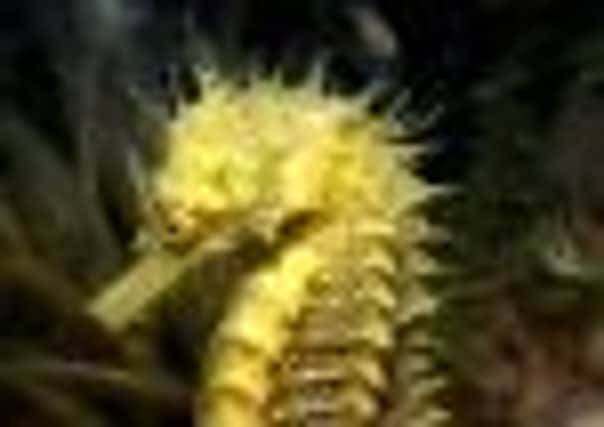Scots law to back seahorses in race for survival


Eleven animals and plants earmarked as needing greater protection also include the vulnerable water vole, which has seen numbers plummet by 90 per cent in recent decades.
If the Scottish Government goes ahead with recommendations to add the species to the Wildlife and Countryside Act 1981, killing or harming them would bring a maximum penalty of a £5,000 fine or a six-month prison sentence.
Advertisement
Hide AdAdvertisement
Hide AdThe spiny seahorse and short-snouted seahorse are under threat internationally because of their use in Chinese medicine and are also often sought after for fish tanks in the home.
The new protection, currently out for consultation, would make it illegal to buy a seahorse in Scotland.
Dr David Donnan, species adviser in the coastal and marine ecosystems unit at Scottish Natural Heritage, said: “There are two reasons why sea horses around the world are collected. One is for the aquaria trade and the other is for use of dried sea horses in Chinese medicine.”
The Chinese medicine trade takes in excess of 30 million sea horses per year from around the world.
“It will not be long before the British Isles becomes a target for this trade,” says the consultation report. “It has been suggested that a figure of up to one million animals a year (the vast majority of which never reach the destination they were bound for due to death in transit) are gathered for this trade around the world and very few survive any period of time as they are notoriously difficult to sustain in captivity.
“The British Isles is now being targeted for collection for the private aquarium trade, with a small but significant number of animals being taken by divers and fishermen.”
The water vole, already given full protection under the Wildlife and Countryside Act in England and Wales, has been in decline since 1900.
A survey carried out from 1996 to 1998 found no signs of the animals in nine out of ten of the sites where they were previously known to live. Wildlife experts believe it is time it was given the same level of protection in Scotland as in England and Wales.
Advertisement
Hide AdAdvertisement
Hide Ad“Extending legal protection sends a clear message about the importance of preventing the extinction of this species,” the report says. “Full protection would place the water vole on the same legal footing as other threatened mammals, such as the otter, red squirrel, common dormouse and bats.”
Accidental killing is thought to be an issue threatening the rodent. “This is likely to be a fairly widespread phenomenon as water voles are either shot or poisoned where they are mistaken for brown rats, or occupy the same areas,” the report says.
“In one case, poisoning has led to the extinction of an entire population.”
Two moths which are only found in Scotland – the narrow-bordered five-spot burnet and the slender Scotch burnet – would also be protected.
The slender scotch burnet lives on Mull and Ulva, on steep slopes below cliffs, where they eat a specific plant, common bird’s-foot trefoil.
Their rarity has made them attractive to private collectors, with breeders and dealers thought to operate from England. Under the WCA this would become illegal.
“There have been reports of commercial collecting of larvae, on a sufficient scale as to be a significant threat to this subspecies,” the report says.
“In April 2002, two individuals were found to be in possession of slender Scotch burnet moth larvae, and were known to have been on Mull. The homes of the two were raided and the case was heard in an English court, but the defendants were found not guilty of any offence.”
Advertisement
Hide AdAdvertisement
Hide AdThe narrow-bordered five-spot burnet, also known as the Talisker burnet, is found only on Skye, where it is thought to number about 400.
There are similar concerns that it is being sold to collectors. An advert in the Entomologuical Livestock Group Newsletter in 1999, was selling 15 larvae.
Allis shad and twaite shad, the UK’s only two types of herring, are also on the list. Both are struggling to survive because dams and weirs are blocking their access to spawning sites. In Scotland, they are now only found in a small number of rivers flowing into the Solway Firth.
The pine hoverfly is now only found in two pine forests in Strathspey and is considered critically endangered.
And the aspen hoverfly, also due to be added to the list, is found in just six spots in the Highlands.